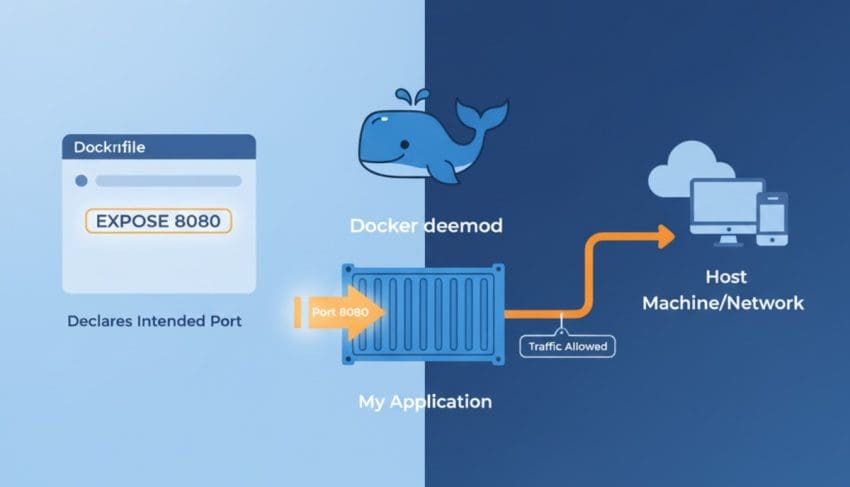If you’ve ever peeked into a Dockerfile, you might have come across a line like this:
EXPOSE 8080At first glance, it looks like it’s opening a port — but here’s the catch: it doesn’t actually open or publish anything to the outside world! 😮
Let’s unpack what it really does and why it’s still an important instruction.
Understanding EXPOSE 🔍
The EXPOSE instruction in a Dockerfile is more about documentation than functionality. It tells anyone reading the Dockerfile (or inspecting the image) which port the application inside the container is expected to use. Think of it like a sticky note on your Dockerfile saying — “Hey, this container listens on port 8080!” 📝
For example:
FROM python:3.9
WORKDIR /app
COPY . .
RUN pip install -r requirements.txt
EXPOSE 5000
CMD ["python", "app.py"]Here, EXPOSE 5000 simply communicates that your app runs on port 5000. But the port won’t actually be accessible from your host system unless you explicitly map it using -p during container run.
Exposing vs Publishing Ports 🌐
A lot of beginners confuse EXPOSE with -p. Let’s clarify:
- EXPOSE → Just documents which port the container expects to use.
- docker run -p 80:80 → Actually maps container port 80 to host port 80, making it accessible from your local machine or browser.
So even if you add EXPOSE 80 in your Dockerfile, you still need to run:
docker run -p 80:80 myimageto actually reach the application through your host.
When EXPOSE Really Matters 💡
While it doesn’t open the port by itself, EXPOSE becomes useful in Docker Compose setups or multi-container environments.
For instance, let’s say you’re working on a full-stack app — a frontend, backend, and database all defined in a docker-compose.yml file.
If your backend Dockerfile includes:
EXPOSE 8080and your database Dockerfile includes:
EXPOSE 3306then Docker Compose will automatically understand that:
- The frontend can talk to the backend through port
8080 - The backend can talk to the database through port
3306
This makes networking between containers smooth and less error-prone 🔗
Quick Recap 🧠
✔ EXPOSE is a metadata instruction — it doesn’t open ports, just declares them.
✔ To actually access the port, use docker run -p host_port:container_port.
✔ It’s particularly helpful in Docker Compose or multi-container setups.
✔ Think of it as good communication practice — future developers (and even future you!) will thank you. 🙌
Wrapping It Up 🎯
In short, EXPOSE doesn’t do much by itself, but it tells a lot. It’s a best practice that adds clarity to your Dockerfiles and helps when containers need to communicate with each other.
To dive deeper… Check out these related topics:

